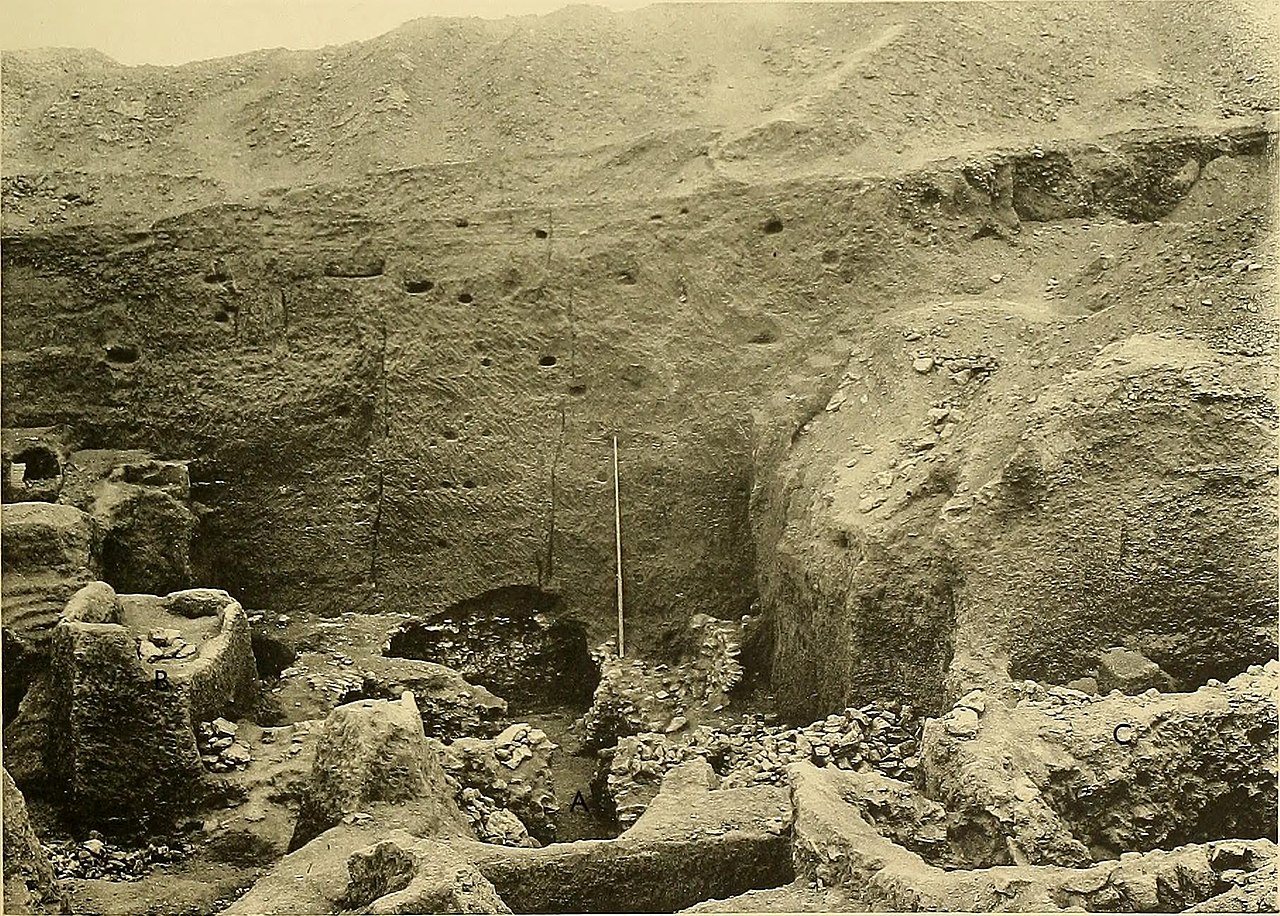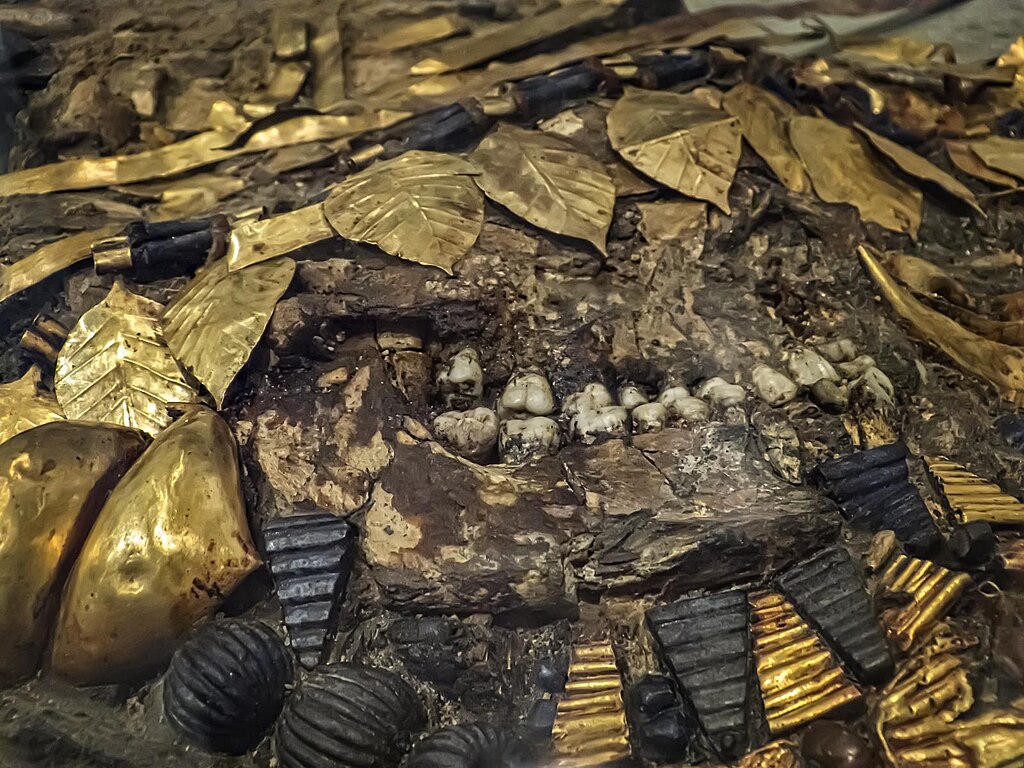"Graverob-Dungeoneering. Yeah, dungeoneering." (Part 2 - Mesopotamia)
In the last post I explored the tomb of Pharaoh Tutankhamen. In this post I will be exploring tombs within a greater cemetery complex from the Mesopotamian city of Ur. The primary focus will be from the tomb of Queen Puabi (Personal Grave 800) due to the amount of grave goods within it. Supplemental information from a few other graves within the complex will be used as well. This cemetery complex is far from Egypt in both time and space; both the similarities and differences will give further inspiration for a proper "dungeon" of the time period.
As in my Tutankhamun post, I will be listing a lot of items. I have included pictures of some of them. These images, and more, can be found at the following sites:
Queen Puabi (1st Dynasty of Ur, 2500 BC)
Queen Puabi's royal tomb (PG 800) is one of 16 "royal tombs" found in the Royal Cemetery at Ur. These 16 royal tombs are within the greater cemetery which contains 1,800 graves total. It was Leonard Woolley who is attributed with the royal tombs. He referred to them as "death pits" for reason we will get into later in this post.
Layout of PG 779

Layout of PG 800

Unlike Tutankhamun's tomb, Queen Puabi's tomb appears to be either one or two rooms, depending on how one interprets the above image. Given PG 779, the tomb of King Ur-Pabilsag, has four rooms, Queen Puabi's tomb may be two rooms. Additionally, another tomb below Queen Puabi's tomb, PG 789, would seem to indicate these "royal tombs" had more than one room. I have sectioned Queen Puabi's tomb into "tomb proper" and "death pit". The grave is accessible via a descending ramp of earth, with the death pit above the tomb. The death pit above Queen Puabi's tomb is most likely hers; there is a chance it is just a death pit with no connection to Queen Puabi. The amount of tombs and death pits scattered throughout the royal cemetery make determining "ownership" difficult.
As best I can gather, the tomb was dug, built, and stocked. Then, before burying it, the death pit got its name as many people died in the pit around the grave. These all were then buried. For purposes of this post, I am considering the death pit as a separate accessible area within the dungeon. The heavily outlined section in PG 800 above would be the tomb proper with the other areas being the death pit.
Cemetery Complex

Personal Graves 779 (A), 755 (B), 777 ©

The Death Pit
Assuming the death pit above the tomb proper was Puabi's death pit, the party would find the following:
- 24 human bodies
- 5 armed males in the southeast corridor
- 4 grooms for the oxen by the oxen remains
- 3 attendants by the wardrobe
- 12 female attendants wearing headdresses by the southwest wall
- 2 dead oxen with a cart or chariot
- A large chest containing textiles (the wardrobe)
- Numerous metal, stone, and clay vessels
- A harp or lyre
Remains of an Attendant with Headdress

The most significant difference compared to Tutankhamun's tomb is the amount of dead people. Tutankhamun had his two stillborn daughters entombed with him, but he didn't kill them. These death pits give evidence of ritual human sacrifice involved in the burial of royalty. One such death pit contained 74 attendants adorned with decorations of precious metals and stones.
The significance of the dead bodies is still an ongoing debate. Majority of those killed in the death pits were adorned with precious metals or stones in some fashion. Soldiers were killed in their armors with their weapons. Other attendants, like at least one within Queen Puabi's tomb, had musical instruments. It seems these individuals were the eternal entourage of the king or queen; the forever attendants and guards in the afterlife of their sovereign. The means of death seems to be blunt-force trauma based on some skeletal remains.
Whatever their significance, the death pits are not the tombs, and so they do not contain all the goodies. However, the well-adorned attendants could have precious metals or precious stones in their armors, weapons, headdresses, instruments, and other personal items. The other items, like the vessels or chests, could also be worth something despite their contents largely not surviving the passage of time.
Tomb Proper
Dropping into the tomb proper via the vaulted stone ceiling, the party would find a number of things. Of the listed items, many of them would be found within the other tombs as well. I have listed significant items from other tombs for the purpose of consolidation. These extra items have their respective personal grave noted.
First is the final resting place of Queen Puabi. Her skeletal remains lay upon a wooden bier. Within the tomb proper are the skeletal remains of three more attendants.
Second is all the treasure, as follows:
- Queen Puabi's golden headdress
- A bull-headed lyre
- Gold tableware
- Necklaces and belts of precious metals and stones
- A chariot with silver lioness heads
- Silver and lapis lazuli
- Gold earrings, rings, bracelets, and belts
- Beads of precious stones
- Other jewelry
- Queen Puabi's cylinder seal bearing her name and title
- Vessels of stone and pottery
- The Standard of Ur (PG 779)
- Ram in a Thicket (PG 1237)
Headdress
Bull-headed Lyre

Lioness Head

Standard of Ur

Ram in a Thicket

Precious metals, precious stones, and rare artifacts all throughout the tomb. While the amount of precious metals and stones may be smaller, the crafted quality of them will increase their value tremendously. It may only take the party a day to move all the treasure out of the dungeon.
Although, given the frequency of which the greater complex is used, surely someone will recognize one of the more unique items when it shows up at market and make a connection.
Miscellaneous Thoughts & Considerations
- Reality
These tombs are so densely packed it is difficult to pinpoint exactly who had what. It is believed by some that Queen Puabi's tomb was stocked with riches that were looted from the King's Tomb below it. Additionally, the grave pit placements and variations make it difficult to ascertain whose attendants/servants they were. Despite the many differences from Egypt, one constant remains: the things in the tombs were going with the deceased into the afterlife, including the people sacrificed. Both items and people were seen as their belongings.
- Game
This cemetery complex screams ghosts. There are hundreds of ritually sacrificed people within this complex, many directly adjacent to a tomb. It is impossible to know if they died willingly, drew the short stick, or were rounded up and slaughtered. Undead should be rife in this area - ghosts and skeletons especially. There are no statues or magicks here, nor are there many clear cut places to put traps due to the mess of the complex. Puabi's tomb has more of an undead/combat vibe than the searching/trap vibe of Tutankhamun's.
As for the loot, again this real-life tomb is great inspiration for what to stock a dungeon with besides coins: instruments, clothing, weapons, jewelry, sculptures/statues, art, and precious metals and stones in various pieces and configurations.
- Setting
The setting considerations are largely the same, with one small nuance: the party has explored multiple "dungeons" belonging to multiple kings and queens. Assuming the larger complex is in play, the party has looted from people of all strata of life; people whose descendants probably live in the surrounding towns and may recognize certain family heirlooms as belonging to grandpa or great-grandma. The party now has to worthy about authorities and the general populace.
Closing Remarks
I enjoyed studying this complex. The significance of Queen Puabi within historical understanding of the time period is immense, because she was a queen in her own right. It is believed she was not married; she was sole ruler. The connections between cultures thousands of miles apart, as well as their differences, gives greater insight and inspiration to a setting in this time of history. I just enjoy it; that's really what I'm saying.
